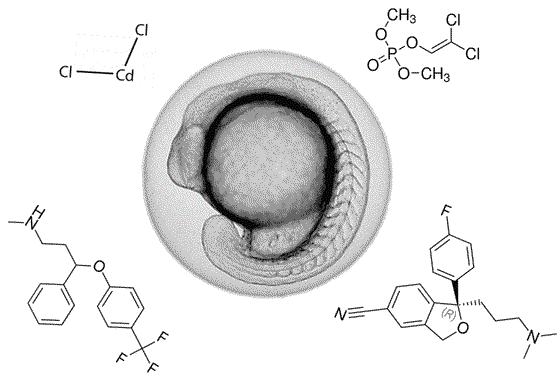Stuttgart, den 18. 11. 2019
Environmental pollutants can interfere with the development of the nervous system of vertebrates. However, the identification of the neurotoxic potential and the actual modes of action of these substances is highly challenging.
Recent studies have shown that spontaneous tail movements of zebrafish embryos can help to determine the neurotoxic potential of chemical compounds. In the scope of Effect-Network in Water Research, researchers of the University of Heidelberg have investigated spontaneous tail coiling movements of zebrafish embryos with regard to their application for the (eco)toxicological evaluation of neuroactive substances.
To this end, zebrafish embryos were exposed to different neuroactive compounds, and the effects of these substances on the early tail movements of the embryos were analyzed. On the one hand, the zebrafish embryos proved very sensitive to changes in ambient illumination suggesting that the neuronal circuits controlling the spontaneous movements of zebrafish embryos are much more complex than previously assumed. On the other hand, a new test protocol was developed that allowed to identify multiple effects of neurotoxic substances on tail movements of zebrafish embryos.
 zebrafish embryo surrounded by chemical formulas
zebrafish embryo surrounded by chemical formulas
Test substances with different primary modes of action impaired coiling movements of the embryos in different fashions. For example, embryos exposed to the antidepressants fluoxetine and citalopram showed spontaneous tail movements at a later developmental stage than control embryos. In addition, citalopram reduced the frequency of the tail movements.
This research demonstrates that the neurotoxic potential of chemical compounds can be identified based on their effects on tail movements of zebrafish embryos. Furthermore, it was shown that neurotoxic substances interfere with various processes throughout the embryonic development of zebrafish. Thus, studies assessing the neurotoxic potential of chemical compounds based on the coiling activity of zebrafish embryos must include different neuronal and developmental endpoints in order to reliably determine the toxic potential of test substances.
For more detailed information refer to:
https://doi.org/10.1016/j.ecoenv.2019.109754
https://doi.org/10.1016/j.chemosphere.2019.06.154
Prof. Dr. Thomas Braunbeck
Aquatic Ecology & Toxicology
COS - Centre for Organismal Studies
University of Heidelberg
Im Neuenheimer Feld 504
D-69120 Heidelberg
braunbeck@uni-hd.de
Tel.: +49-(0)62 21-54 56 68